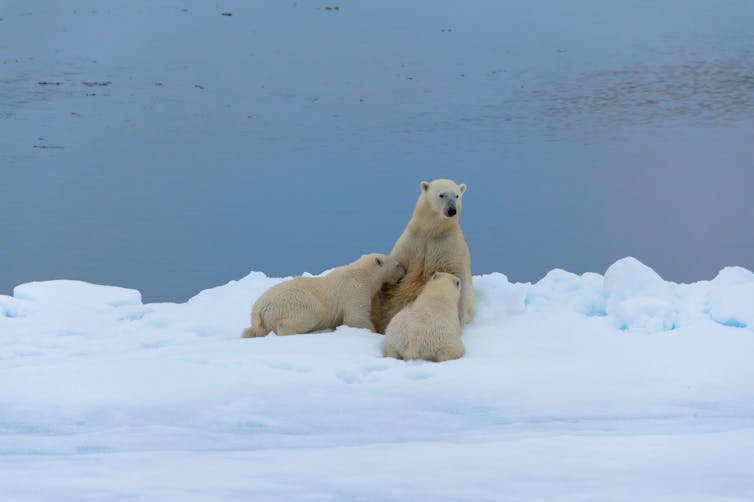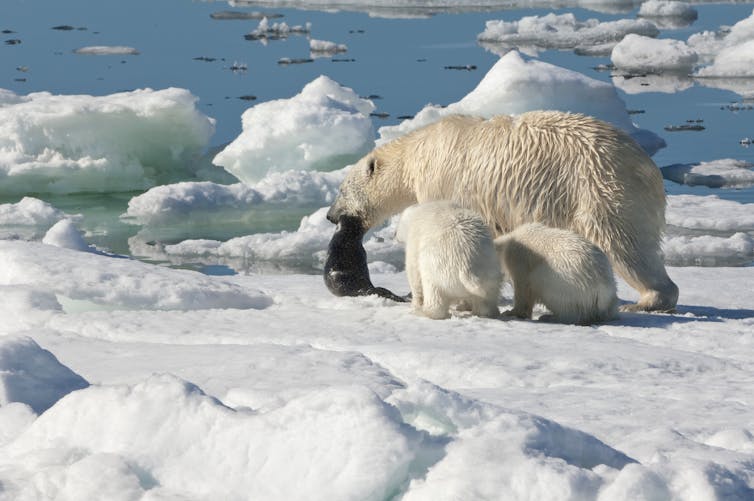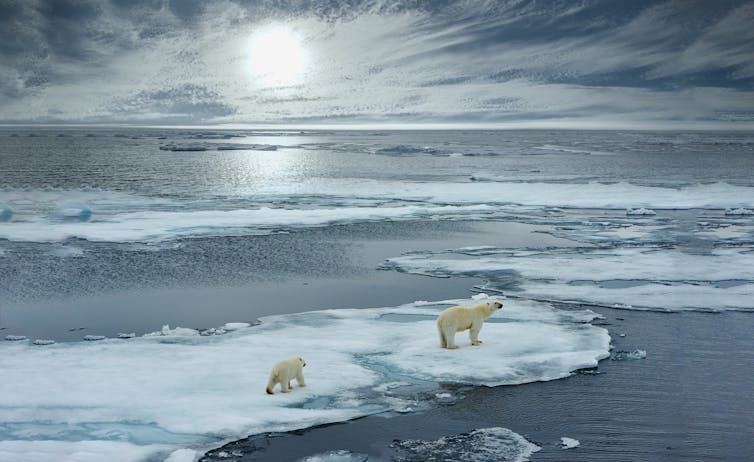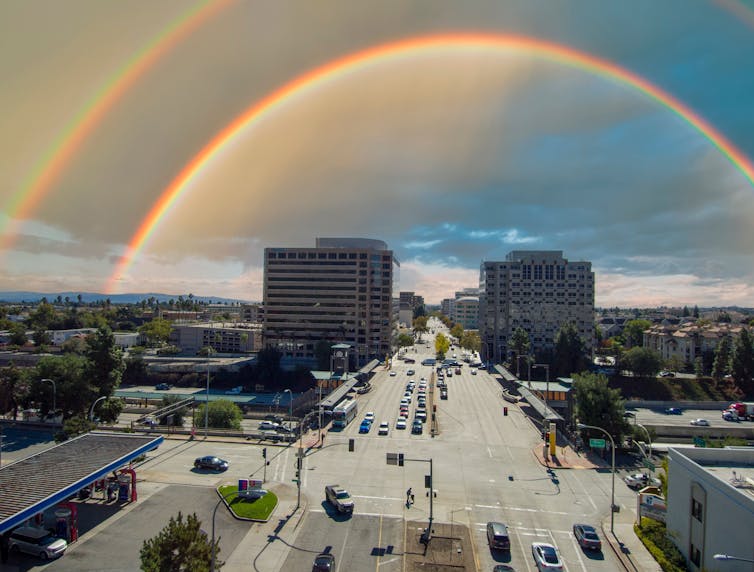 During their time onshore, polar bear mothers may risk their survival by continuing to nurse when food is not available. (Shutterstock)
Louise Archer, University of Toronto
During their time onshore, polar bear mothers may risk their survival by continuing to nurse when food is not available. (Shutterstock)
Louise Archer, University of TorontoWhen sea ice melts, polar bears must move onto land for several months without access to food. This fasting period is challenging for all bears, but particularly for polar bear mothers who are nursing cubs.
Our research, published in Marine Ecology Progress Series, found that polar bear lactation is negatively affected by increased time spent on land when sea ice melts.
Impaired lactation has likely played a role in the recent decline of several polar bear populations. This research also indicates how polar bear families might be impacted in the future by continued sea-ice loss caused by climate warming.
Challenges of rearing cubs
While sea ice might appear as a vast and perhaps vacant ecosystem, the frozen Arctic waters provide an essential platform for polar bears to hunt energy-rich seals — the bread and butter of their diet.
 On shore, polar bears often remain in a fasting state, using their body stores of fat for fuel. (Shutterstock)
On shore, polar bears often remain in a fasting state, using their body stores of fat for fuel. (Shutterstock)While on shore, hunting opportunities are rare and polar bears generally spend their time in a fasting state. Polar bears rely on their immense body fat stores to fuel them during these leaner months, with some individuals measuring almost 50 per cent body fat when they come onshore in early summer.
While on land, polar bears can lose around a kilogram of body mass per day, so making it to the end of the ice-free season requires them to carefully manage their energy. For most polar bears, this means reducing activity levels and conserving energy until the sea ice returns and seal hunting can resume.
Females with cubs must also factor in the additional burden of lactation. Polar bears produce high-energy milk, which — at up to 35 per cent fat — is like whipping cream. This high-fat milk allows cubs to grow quickly, increasing from just 600 grams at birth to well over 100 kilograms by the time they are around two-and-a-half years old and leave their mothers to become independent.
Although lactation is important to both mothers and cubs, studies on polar bear lactation are relatively rare.
To better understand how females manage their lactation investment, our research team revisited a data set of polar bear milk samples collected in the late 1980s and early 1990s from polar bears on land during the ice-free period.
We estimated how long each polar bear mom had been fasting based on annual sea-ice breakup dates and found that the energy content of their milk declined the more days spent onshore. Some bears had stopped producing milk entirely. Both milk energy content and lactation probability were negatively related to the mother’s body condition, meaning females in poor body condition had to prioritize their own energetic needs over their cubs.
The bears who reduced their investment in lactation benefited by using up less of their body reserves, meaning they could fast for longer. Yet the cubs who received lower energy milk grew more slowly than offspring of females that maintained their lactation effort. In the long term, this may reduce cub survival and, ultimately, negatively affect population dynamics.
Climate change and population declines
After around three months on land, the probability of a female with cubs lactating was 53 per cent. This dropped to 35 per cent for a female with yearlings (older cubs from the previous year).
The data in our study were collected around three decades ago. Since then, climate warming has meant that the ice-free season in western Hudson Bay has been extending by around seven days per decade. Polar bears are now regularly forced to spend more than four months on land.
As the ice-free season has increased and polar bears must go for longer without food, their average body condition has declined. The ability of female polar bears to nurse their cubs has probably also become increasingly impaired.
This may have contributed to the 50 per cent decline in the population size of the western Hudson Bay population over the last four decades, and is likely to contribute to further declines if climate warming and sea-ice declines continue as projected without mitigation.
This research adds another piece to our understanding of polar bear resilience to climate change. Without action to halt climate warming and sea-ice loss, survival of cubs will be at risk across the Arctic.![]()
Louise Archer, Postdoctoral Fellow, Biological Sciences, University of Toronto
This article is republished from The Conversation under a Creative Commons license. Read the original article.



